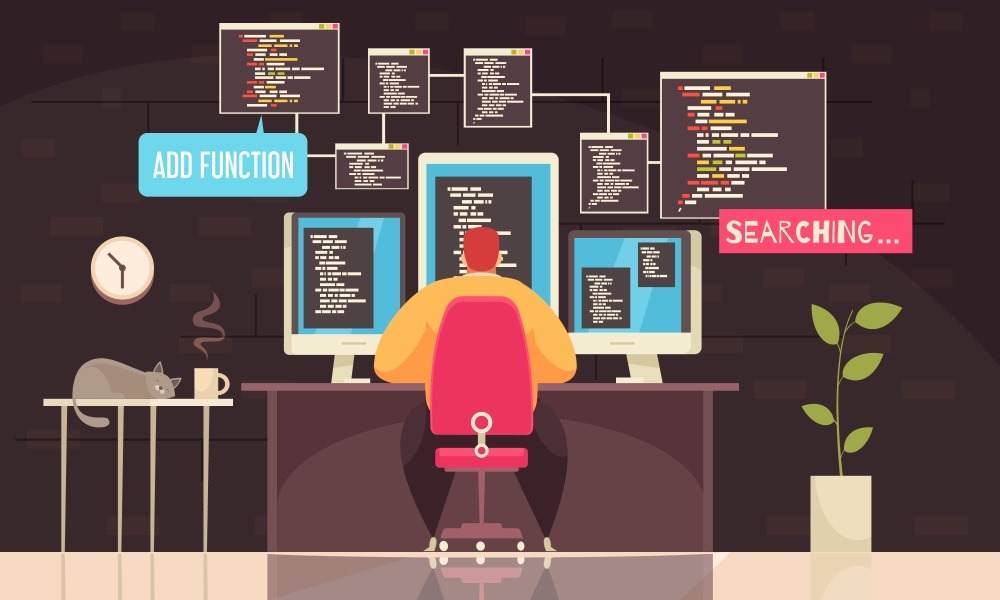Why python is the ideal language for artificial intelligence and machine learning?

Artificial Intelligence (AI) and Machine Learning (ML) are not just buzzwords; they are driving a new age of innovation across industries. From automating mundane tasks to solving complex problems, AI and ML have become integral to our daily lives. As someone who has closely worked with various technologies, I think the real cornerstone of any successful AI and ML project is choosing the appropriate programming language. Among the myriad options available, Python consistently ranks high on the list, particularly for python development companies looking to break new ground in these fields.
Why is Python often the first choice for developers and top python development companies in India when it comes to AI and ML? In this comprehensive guide, we will delve into several compelling reasons that make Python an ideal candidate.
Python wasn’t always the giant that it is today. Conceived in the late ’80s and implemented in December 1989 by Guido van Rossum, Python has come a long way. Over the past three decades, it has transitioned from being a general-purpose scripting language to becoming a leading player in various tech verticals including web development, data analysis, and more. I believe its growth is emblematic of its flexibility and robustness.
In the context of AI and ML, Python’s journey is nothing short of remarkable. It’s interesting to note that it didn’t start off as a language focused on scientific computing or data analysis. However, its easily readable syntax and community-driven libraries have made it a favorite. Top python development companies in India, as well as globally, have recognized Python’s potential and continue to use it as a core technology stack. This historical background serves as evidence for Python’s adaptability and why it has become a go-to language for many.
Simplicity and Readability
I remember the first time I decided to experiment with AI algorithms; the sheer complexity seemed overwhelming. However, Python’s simplicity was a lifesaver. Its syntax, often likened to plain English, allows developers to express concepts without the verbose code that you might encounter in languages like Java or C++. This isn’t just a matter of preference; it significantly reduces the time and mental energy spent on debugging and understanding code.
This simplicity extends to readability as well. Python uses indentation to define blocks of code rather than braces or keywords, making the code cleaner and more readable. Readability is often underrated but think about it—code is read more often than it is written. An easily understandable codebase is essential for collaborative projects and is particularly beneficial for AI and ML, where debugging can be incredibly complicated. I recall a project where I was implementing a neural network from scratch; Python’s readability made it easier to focus on the logic rather than getting lost in the syntax.
Extensive Libraries and Frameworks
If you ask me what one of the greatest strengths of Python is, I would instantly say its extensive libraries and frameworks, especially in the realms of AI and ML. Libraries such as TensorFlow, PyTorch, and scikit-learn not only offer pre-written code for common algorithms and tasks but are also highly optimized for performance. For instance, TensorFlow offers various tools for building and training complex neural network models, making it a valuable asset for any python development company.
Let’s consider TensorFlow. Developed by the Google Brain team, this open-source library has become a standard in the field of machine learning. I think what makes TensorFlow truly unique is its flexibility. It allows you to develop ML models from scratch or use pre-trained models, making it easier to bring your project from concept to production. PyTorch, on the other hand, is celebrated for its dynamic computation graph, making it particularly useful for projects that require a great deal of flexibility and debugging. Lastly, scikit-learn offers a wide array of simple and efficient tools for data analysis and modeling, which is a boon for both beginners and experts alike.
I’ve often found myself using TensorFlow for the heavy lifting and scikit-learn for simpler tasks like data preprocessing or simpler machine learning models in a single project.
Community and Support
One of the underrated strengths of Python is its global community. The wealth of forums, tutorials, and online courses makes Python an ever-evolving language. I believe it’s this robust community that provides an enormous number of educational resources, making Python approachable for newcomers and a continuing education platform for experts. Many top python development companies in India rely on this global community for solving complex issues, validating ideas, and recruiting talented individuals.
As someone who has spent a considerable amount of time in AI and ML, I can say that no amount of formal education can replace the value of community wisdom and shared experiences. Whether it’s a question on Stack Overflow or an insightful article on Medium, the Python community is a wellspring of knowledge.
Interoperability
In the tech world, seldom do you find projects built on a single technology stack. More often than not, various languages and frameworks come together to create a final product. Python excels in this aspect due to its high interoperability with other languages such as C, C++, and Java. For python development companies, this is a considerable advantage, as they can seamlessly integrate Python with other technologies without much hassle.
A real-world scenario that showcases Python’s interoperability is in the field of Internet of Things (IoT). Imagine a project where sensor data is being gathered by a C++ program. This data can be effortlessly passed on to a Python script for more complex data analysis, thanks to Python’s ability to interact with C++ code. It’s this kind of adaptability that makes Python a go-to language for interdisciplinary projects.
Performance
When it comes to AI and ML, performance is not just a perk but a requirement. Given the large data sets and complex algorithms involved, the language you choose needs to be more than just readable; it has to be fast. While Python isn’t natively the fastest language, its vast ecosystem provides several ways to improve performance significantly.
Libraries like NumPy and Cython, and optimization tools like PyPy, offer avenues for performance enhancement. Moreover, TensorFlow and PyTorch come with their optimization techniques and even allow for GPU programming, which dramatically accelerates machine learning algorithms. In my experience, when used wisely, Python’s performance can match, if not exceed, that of other languages traditionally considered faster, such as C++ or Java.
To substantiate this, let’s consider some performance metrics. Research conducted on different language benchmarks shows Python, when optimized using its specialized libraries, can outperform several compiled and interpreted languages in tasks like data sorting and matrix multiplication. This is a major consideration for top python development companies in India and around the world.
Future Trends
As technology continues to advance, so does Python’s role in AI and ML. New libraries and frameworks are consistently being released, and existing ones are updated to be in line with the latest research. I think this is an indicator not just of Python’s current significance but its longevity and evolving role in these fields.
The advent of libraries like JAX for high-performance machine learning and Ray for distributed computing indicates a trend towards more specialized Python libraries designed to solve specific problems in AI and ML. In addition to this, the community’s push towards ethical AI and responsible machine learning is leading to the development of Python tools that aim to make algorithms more transparent and unbiased.
The future is bright for Python, and as someone who keeps an eye on upcoming trends, I highly recommend that anyone interested in AI or ML consider investing time in learning this versatile language.
Between Performance and Future Trends
Before we delve into what the future holds for Python in AI and ML, it’s worth mentioning that the practical aspects of implementing these technologies often come down to choosing the right partner for your project. In this regard, BrainerHub Solutions has earned its reputation as a leading name in Python development in India. With a track record of excellence and a team of skilled developers, they offer end-to-end solutions tailored to your needs. I’ve seen first-hand how the right expertise can accelerate a project from a mere idea to a fully functioning product, and BrainerHub stands out as a go-to choice for Python development services.
It’s essential to find a partner who not only understands the technical landscape but also aligns with your vision. BrainerHub Solutions offers this perfect blend, making it an ideal match for anyone looking to develop a Python-based AI or ML project.
Conclusion
Throughout this blog, we’ve explored several reasons why Python is often the first choice for AI and ML projects. Its simplicity and readability make it accessible, its extensive libraries and frameworks cut down development time, and its performance can be optimized to meet the most demanding tasks. It’s no wonder why top python development companies in India, as well as globally, often lean towards Python for their AI and ML endeavors.
So, are you excited to embark on your AI and ML journey with Python? There’s no better time than now. With the wealth of resources and an ever-growing community, you’re not alone in this adventure. For beginners, consider starting with Python’s official website and for more advanced queries, forums like Reddit and Stack Overflow are gold mines of information.






